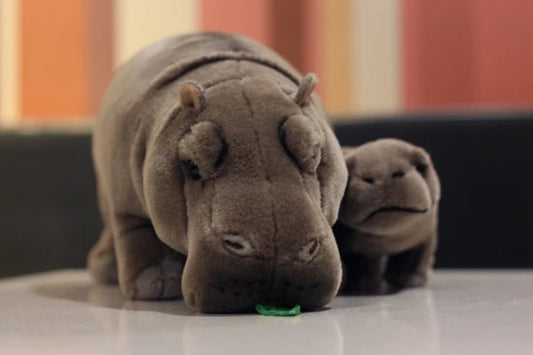Fall Foliage Forecast 2024: A Vibrant Tapestry Across America
As autumn approaches, nature prepares to paint the American landscape in a breathtaking array of reds, oranges, and golds. The 2024 fall foliage season promises to be a spectacular display, offering leaf-peepers and nature enthusiasts a chance to witness one of nature's most magnificent transformations. Despite regional variations due to weather patterns and climate change, this year's autumn colors are expected to be vibrant and awe-inspiring across the country.
The Allure of Autumn Colors: A Historical and Cultural Phenomenon
Fall foliage tourism has been a beloved American tradition for generations. The practice of "leaf-peeping" dates back to the 19th century when wealthy urbanites would venture into rural areas to admire the changing colors. Today, this autumnal pilgrimage has evolved into a significant economic driver for many regions, particularly in the Northeast and Midwest.
The cultural significance of fall foliage extends beyond tourism. It marks the transition of seasons, inspiring artists, poets, and photographers. The changing leaves symbolize the cyclical nature of life and have become deeply ingrained in American folklore and tradition.
"Historical records, satellite observations, and experiments all tell us that the timing of fall foliage is generally getting later in response to the warming temperatures associated with climate change"
Dr. Amanda Gallinat, Assistant Professor of Environmental Studies at Colby College (September 20, 2024)
This shift underscores the delicate balance between nature and human influence, adding urgency to conservation efforts.
Peak Foliage Times and Regional Variations for 2024
Understanding the timing of peak foliage is crucial for planning the perfect autumn getaway. While exact dates can vary based on local conditions, general patterns provide a reliable guide for leaf-peepers:
Northeast
Peak foliage in the Northeast typically occurs in early October. The Adirondacks in New York are already at the midpoint of change, with several parts expected to peak by the first weekend of October. Vermont, often considered the crown jewel of New England's fall foliage, is projected to reach its peak in early to mid-October.
Mid-Atlantic
The Mid-Atlantic region, including Pennsylvania and parts of New York, usually experiences peak colors from late September to mid-October. The Finger Lakes region in New York and the Laurel Highlands in Pennsylvania are particularly popular destinations during this time.
South
Southern states, such as North Carolina and Tennessee, typically see their most vibrant colors from mid-October to early November. The Great Smoky Mountains National Park is renowned for its spectacular display, especially from October 26 to November 3.
Midwest
The Midwest, including Michigan's Upper Peninsula and parts of Wisconsin, often experiences peak foliage from late September to mid-October.
"We are forecasting the best places to go are in the Midwest. The trees should have nice reds and oranges and that could extend all the way down to parts of the Ozarks and parts of southern Missouri"
Paul Pastelok, AccuWeather Meteorologist (September 20, 2024)
West
In the Western states, particularly Colorado, aspen groves typically reach their golden peak in late September to early October.
"Colorado should be great" for fall foliage due to the condition of aspen trees
Kevin Smith, Tree Physiologist and Pathologist with the U.S. Forest Service (September 20, 2024)
It's important to note that drought and heat can impact the fall spectacle. In 2024, some regions, especially the mid-Atlantic and central Appalachians, may experience a delay in the onset of fall colors by a few weeks due to these weather conditions.
Expert Predictions for 2024
Leading experts in the field of ecology and meteorology have shared their insights for the 2024 fall foliage season:
- Amanda Gallinat, Assistant Professor of Environmental Studies at Colby College, expects a typical fall progression. She predicts leaves will change color in early October across the northern U.S., then mid to late-October at middle latitudes, and early to mid-November in the southern part of the country (September 20, 2024).
- Paul Pastelok, AccuWeather Meteorologist, is particularly optimistic about the Midwest. He forecasts vibrant fall foliage stretching from the interior Northeast and Great Lakes through the Mississippi River Valley (September 20, 2024).
- Kevin Smith, Tree Physiologist and Pathologist with the U.S. Forest Service, has a positive outlook for Colorado's aspen trees, suggesting they are in good condition for an impressive display (September 20, 2024).
These expert predictions provide valuable insights for planning your fall foliage experience, but it's always wise to check local forecasts and foliage reports as your trip approaches.
Top Fall Foliage Destinations by Region
Northeast
- Adirondacks, New York: The Adirondack region offers a vast wilderness of mountains, lakes, and forests. The mix of deciduous and coniferous trees creates a stunning palette of colors. Popular spots include Whiteface Mountain and the High Peaks Wilderness Area.
- Acadia National Park, Maine: While some areas may be affected by rain this year, Acadia remains a top destination. The park's diverse landscape of rocky coastlines, mountains, and forests provides a unique backdrop for fall colors. The 27-mile Park Loop Road offers numerous vantage points.
- White Mountains, New Hampshire: The Kancamagus Highway, a 34-mile scenic byway through the White Mountain National Forest, is renowned for its spectacular foliage views. Mount Washington and Franconia Notch State Park are also must-visit locations.
- Vermont: The entire state becomes a canvas of autumn colors. The Green Mountain Byway, running from Waterbury to Stowe, offers picturesque views of rolling hills and quaint New England towns. Smugglers' Notch State Park is another favorite among leaf-peepers.
Mid-Atlantic
- Finger Lakes, New York: This region's combination of colorful hillsides and reflective lakes creates stunning vistas. Watkins Glen State Park and the Finger Lakes National Forest are particularly beautiful in autumn.
- Laurel Highlands, Pennsylvania: Recently ranked among the top places to view fall foliage by USA TODAY's 10Best Readers' Choice Awards, this region offers a mix of state parks, forests, and scenic byways. Ohiopyle State Park is a highlight, with its waterfalls framed by autumn colors.
South
- Great Smoky Mountains National Park, North Carolina/Tennessee: The park's diverse elevation ranges create a long and varied foliage season. Clingmans Dome and Newfound Gap Road offer breathtaking panoramic views of the colorful landscape.
- Blue Ridge Parkway, North Carolina/Virginia: This 469-mile scenic drive is often called "America's Favorite Drive." It connects Shenandoah National Park to Great Smoky Mountains National Park, offering countless overlooks and hiking trails along the way.
Midwest
- Upper Peninsula of Michigan: The U.P., as it's affectionately known, offers a vast wilderness of forests, lakes, and waterfalls. Porcupine Mountains Wilderness State Park and Tahquamenon Falls State Park are particularly stunning in autumn.
- Hot Springs, Arkansas: While not typically associated with fall foliage, Hot Springs National Park and the surrounding Ouachita National Forest offer a unique blend of autumn colors and natural hot springs.
West
- Colorado's Aspen Groves: The state's famous aspen trees turn a brilliant gold in autumn. Rocky Mountain National Park, San Juan Skyway, and the Maroon Bells near Aspen are iconic locations for viewing this spectacle.
- Brockway Mountain, Michigan: Located in the Upper Peninsula, this spot offers breathtaking views of Half Lake Superior and the surrounding forests, creating a unique blend of water and fall colors.
Current Trends in Fall Foliage Tourism
The fall foliage experience is evolving with technological advancements and changing travel preferences:
- Increased Use of Technology: Interactive maps and forecasts, such as those provided by AccuWeather and the Smoky Mountains National Park, have become essential tools for planning fall foliage trips. These resources allow travelers to optimize their timing and routes based on real-time data and predictions.
- Focus on Sustainable Tourism: There's a growing emphasis on sustainable practices during fall foliage season. This includes choosing eco-friendly accommodations, supporting local businesses, and practicing Leave No Trace principles while enjoying nature.
- Diversification of Experiences: While scenic drives remain popular, many travelers are seeking diverse experiences such as fall foliage train rides, kayaking on lakes surrounded by colorful forests, or attending harvest festivals in small towns.
- Off-the-Beaten-Path Destinations: As popular spots become crowded, more travelers are exploring lesser-known areas for a more serene fall foliage experience. This trend is spreading the economic benefits of tourism to smaller communities.
- Extended Season Travel: With climate change affecting foliage patterns, some travelers are planning multiple short trips or longer stays to increase their chances of catching peak colors.
Impact of Fall Foliage on Local Economies
The annual display of autumn colors is more than just a visual treat; it's a significant economic driver for many regions:
- Tourism Revenue: In New England alone, fall foliage tourism generates billions of dollars annually. For example, Vermont, with a population of just over 600,000, welcomes about 3.5 million visitors during foliage season, contributing significantly to the state's economy.
- Job Creation: The influx of tourists creates seasonal employment opportunities in hospitality, tour guiding, and retail sectors. Many small businesses in rural areas rely on this seasonal boost to sustain them throughout the year.
- Local Business Support: Leaf-peepers patronize local restaurants, shops, and accommodations, providing a crucial injection of revenue into local economies, especially in rural areas.
- Extended Tourism Season: Fall foliage helps extend the tourism season beyond summer, providing a vital economic bridge for many tourism-dependent communities.
- Ripple Effect: The economic impact extends beyond direct tourism spending. Increased visitation often leads to infrastructure improvements and community development projects, benefiting locals year-round.
Comparison of Viewing Experiences
Choosing the right way to experience fall foliage can greatly enhance your autumn adventure:
Road Trips vs. Local Exploration
Road Trips:
- Pros: Cover more ground, experience diverse landscapes, flexibility to change routes.
- Cons: Can be tiring, potentially expensive with fuel and accommodation costs.
- Best for: Those who enjoy driving and want to see a wide variety of fall colors across different regions.
- Popular routes: Blue Ridge Parkway, Kancamagus Highway in New Hampshire, Mohawk Trail in Massachusetts.
Local Exploration:
- Pros: More relaxed pace, deeper exploration of a single area, often more budget-friendly.
- Cons: Limited to one region's color palette and timing.
- Best for: Those who prefer a more immersive experience or have limited time.
- Ideas: Explore local state parks, take day trips to nearby scenic areas, or enjoy urban fall colors in local parks.
Guided Tours vs. Self-Guided Trips
Guided Tours:
- Pros: Expert knowledge, pre-planned itineraries, potential access to exclusive viewing areas.
- Cons: Less flexibility, potentially more expensive, set schedules.
- Best for: First-time visitors to an area, those who prefer structured experiences.
- Examples: Leaf-peeping bus tours in New England, guided hikes in national parks.
Self-Guided Trips:
- Pros: Complete flexibility, often more budget-friendly, personalized experience.
- Cons: Requires more planning, may miss some hidden gems without local knowledge.
- Best for: Experienced travelers, those who enjoy spontaneity and independence.
- Tools: Utilize apps like Leaf Peepr or Fall Foli age Prediction Map for up-to-date information.
Urban vs. Rural Settings
Urban Settings:
- Pros: Combine fall colors with city amenities, often more accessible.
- Cons: Less immersive nature experience, potentially more crowded.
- Best for: Those who want to balance nature viewing with urban exploration.
- Examples: Central Park in New York City, Boston's Emerald Necklace, Chicago's Lincoln Park.
Rural Settings:
- Pros: More immersive nature experience, often more vibrant and extensive colors.
- Cons: May require more travel, fewer amenities.
- Best for: Nature enthusiasts, photographers, those seeking a retreat from urban life.
- Examples: White Mountain National Forest, Shenandoah National Park, Michigan's Upper Peninsula.
Planning the Perfect Fall Foliage Trip
To make the most of your autumn adventure, follow these steps:
-
Research and Choose Your Destination
- Use resources like state tourism websites and fall foliage prediction maps to identify potential locations.
- Consider factors like accessibility, accommodation options, and available activities beyond leaf-peeping.
-
Optimize Timing with Interactive Maps and Forecasts
- Utilize tools like AccuWeather's fall foliage map or the Smoky Mountains National Park's interactive prediction map.
- Follow social media accounts of local tourism boards or park services for real-time updates.
-
Plan a Diverse Itinerary
- Combine scenic drives with outdoor activities like hiking, kayaking, or mountain biking.
- Include visits to local attractions such as apple orchards, pumpkin patches, or harvest festivals.
-
Pack Appropriately
- Bring layers to accommodate variable weather conditions.
- Don't forget essentials like comfortable walking shoes, a camera, and binoculars.
-
Support Local Businesses and Practice Sustainable Tourism
- Stay in locally-owned accommodations when possible.
- Dine at local restaurants and shop at local stores.
- Follow Leave No Trace principles to minimize your environmental impact.
-
Be Flexible
- Have a backup plan in case of unexpected weather or if peak colors arrive earlier or later than predicted.
- Consider weekday visits to popular destinations to avoid crowds.
-
Enhance Your Experience
- Learn about the science behind fall colors to deepen your appreciation.
- Consider joining a photography workshop to capture the beauty of the season.
By following these steps, you'll be well-prepared to enjoy the stunning spectacle of autumn colors while supporting local communities and preserving the natural beauty for future generations.
Frequently Asked Questions
How does elevation affect fall foliage timing?
Elevation plays a significant role in the timing of fall foliage. Generally, higher elevations experience color changes earlier than lower elevations. This is due to cooler temperatures at higher altitudes, which trigger the color change process sooner.
For example, in the Appalachian Mountains:
- High elevations (above 4,000 feet): Colors typically peak in late September to early October.
- Mid elevations (2,000-4,000 feet): Peak colors usually occur in mid-October.
- Lower elevations (below 2,000 feet): Fall foliage often peaks in late October to early November.
This elevation effect creates a longer overall foliage season in mountainous areas, as colors gradually progress from the mountaintops to the valleys.
What photography tips can enhance fall foliage shots?
- Golden Hour Lighting: Shoot during the "golden hours" just after sunrise or before sunset for warm, soft lighting that enhances autumn colors.
- Use a Polarizing Filter: This can reduce glare and increase color saturation, especially useful for photographing foliage reflected in water.
- Experiment with Composition: Try different perspectives – wide-angle shots for sweeping landscapes, close-ups for leaf details, or framing fall colors with other elements like rustic barns or winding roads.
- Include Water Features: Lakes, rivers, or waterfalls can add interest and reflect fall colors, creating stunning compositions.
- Overcast Days Can Be Ideal: Soft, diffused light on overcast days can make colors appear more saturated and reduce harsh shadows.
- Use a Tripod: For sharper images, especially in low light conditions or when using slower shutter speeds to capture movement (like falling leaves).
- Adjust White Balance: Sometimes, setting your white balance to "cloudy" can warm up the tones in your fall foliage shots, even on sunny days.
- Post-Processing: Use editing software to fine-tune contrast, saturation, and white balance, but be careful not to over-edit and make the scene look unnatural.
Are there any fall foliage festivals worth attending in 2024?
Yes, there are numerous fall foliage festivals across the country that celebrate the season's beauty. Here are a few notable ones for 2024:
-
Autumn Alive Fall Foliage Festival - Jim Thorpe, Pennsylvania (Weekends in October)
Features live music, ghost tours, and scenic train rides through the Lehigh Gorge. -
Wellsboro's Fall Festival - Wellsboro, Pennsylvania (October 12-13, 2024)
Celebrates the peak of fall foliage in the Pennsylvania Grand Canyon area with crafts, food vendors, and live entertainment. -
Adirondack Balloon Festival - Queensbury, New York (September 19-22, 2024)
Combines the beauty of fall foliage with the spectacle of hot air balloons. -
Autumn Glory Festival - Oakland, Maryland (October 9-13, 2024)
Celebrates the fall season in the Appalachian Mountains with parades, concerts, and craft shows. -
Oktoberfest - Helen, Georgia (September 12 - November 3, 2024)
While not specifically a fall foliage festival, this long-running event coincides with peak foliage in the North Georgia mountains.
Remember to check official event websites for the most up-to-date information, as dates and details may change.
Challenges and Solutions
Overcrowding in Popular Destinations
Overcrowding has become a significant challenge in many popular fall foliage destinations, potentially diminishing the experience for visitors and putting strain on local resources and ecosystems.
Solutions:
-
Visit During Weekdays or Off-Peak Hours:
- Weekdays typically see fewer visitors than weekends.
- Early mornings or late afternoons/evenings often have fewer crowds.
-
Explore Lesser-Known Locations:
- Research state parks, national forests, or scenic byways that are off the beaten path.
- Local tourism boards can often provide information on hidden gems in their areas.
-
Use Visitor Management Systems:
- Some popular destinations, like Acadia National Park, have implemented reservation systems for certain attractions to manage crowd levels.
- Check if your destination requires advance reservations and plan accordingly.
-
Opt for Shoulder Seasons:
- Consider visiting just before or after peak foliage times when crowds may be smaller.
- While colors might not be at their absolute peak, the experience can be more enjoyable with fewer people.
-
Utilize Technology:
- Use apps and websites that provide real-time information on crowd levels and parking availability.
- Some parks and forests have implemented systems to alert visitors when parking lots are full.
Unpredictable Weather Affecting Foliage
Weather patterns can significantly impact the timing and quality of fall foliage, potentially disrupting travel plans.
Solutions:
-
Plan Flexible Itineraries:
- Build flexibility into your schedule to accommodate weather changes.
- Have alternate dates in mind if possible.
-
Have Indoor Alternatives Ready:
- Research indoor attractions like museums, galleries, or local craft breweries in your destination area.
- Consider activities like scenic drives that can still be enjoyable in less-than-ideal weather.
-
Use Reliable Forecasting Tools:
- Utilize specialized fall foliage prediction maps and apps.
- Follow local meteorological services for the most accurate short-term weather forecasts.
-
Extend Your Stay if Possible:
- A longer stay increases your chances of experiencing good weather and peak foliage.
- Consider booking accommodations with flexible cancellation policies.
-
Embrace the Conditions:
- Rainy or foggy conditions can create unique photographic opportunities and atmospheric scenes.
- Learn to appreciate the beauty of fall colors in various weather conditions.
-
Diversify Your Activities:
- Plan a mix of outdoor and indoor activities to ensure enjoyment regardless of weather.
- Consider activities that are less weather-dependent, like scenic train rides or covered bridge tours.
By implementing these solutions, travelers can mitigate the challenges of overcrowding and unpredictable weather, ensuring a more enjoyable and fulfilling fall foliage experience.
Ethical Continuing from where the previous response left off: Considerations and Best Practices
As we enjoy the beauty of fall foliage, it's crucial to consider the ethical implications of our actions and adopt best practices to ensure the preservation of these natural wonders for future generations.
Respecting Nature and Leaving No Trace
-
Stay on Designated Trails:
- Avoid trampling vegetation or disturbing wildlife habitats.
- Stick to marked paths to prevent soil erosion and protect fragile ecosystems.
-
Pack Out What You Pack In:
- Carry all trash with you, including biodegradable items like apple cores or banana peels.
- Consider bringing a small trash bag to collect any litter you may find along the way.
-
Respect Wildlife:
- Observe animals from a distance without feeding or approaching them.
- Be aware of local regulations regarding wildlife interaction.
-
Minimize Campfire Impact:
- Use established fire rings where permitted and fully extinguish fires before leaving.
- Consider using a camping stove instead of building a fire.
-
Leave Natural Objects Undisturbed:
- Resist the urge to collect leaves, rocks, or other natural souvenirs.
- Take photos instead of physical mementos to preserve the environment.
Supporting Local Communities During Visits
-
Shop and Dine Locally:
- Support small businesses, local artisans, and family-owned restaurants.
- Purchase locally-made products as souvenirs to contribute directly to the local economy.
-
Choose Local Accommodations:
- Opt for locally-owned bed and breakfasts, inns, or vacation rentals over chain hotels when possible.
- Consider agritourism options like farm stays to support local agriculture.
-
Participate in Community Events:
- Attend local fall festivals, farmers markets, or cultural events to engage with the community.
- These experiences often provide a more authentic and enriching travel experience.
-
Use Local Guides and Services:
- Hire local guides for tours or outdoor activities to support local employment and gain insider knowledge.
- Utilize local transportation services where available.
-
Respect Local Customs and Privacy:
- Be mindful of local traditions and customs, especially in rural or small-town settings.
- Avoid trespassing on private property when seeking foliage views.
Promoting Awareness of Climate Change Impacts on Foliage
-
Educate Yourself and Others:
- Learn about how climate change affects fall foliage patterns and timing.
- Share this knowledge respectfully with fellow travelers to raise awareness.
-
Support Conservation Efforts:
- Donate to or volunteer with local conservation organizations working to protect forests and natural areas.
- Participate in citizen science projects that monitor fall foliage changes over time.
-
Reduce Your Carbon Footprint:
- Consider carpooling or using public transportation for foliage trips when possible.
- Offset the carbon emissions of your trip through reputable carbon offset programs.
-
Advocate for Environmental Policies:
- Support policies and initiatives that address climate change and protect natural areas.
- Engage with local representatives about the importance of preserving natural landscapes.
-
Practice Sustainable Tourism:
- Choose eco-friendly accommodations and tour operators that prioritize sustainability.
- Minimize water and energy use during your travels.
By adhering to these ethical considerations and best practices, we can ensure that our enjoyment of fall foliage is balanced with respect for nature, support for local communities, and awareness of broader environmental challenges. This approach not only enhances our own experience but also helps preserve the beauty of autumn colors for future generations to enjoy.
Success Stories
Testimonial from a Visitor to Acadia National Park
Sarah Thompson, a photographer from Chicago, shared her experience visiting Acadia National Park during the 2023 fall foliage season:
"I've always dreamed of capturing the fall colors of New England, and Acadia National Park exceeded all my expectations. Despite some initial concerns about rain affecting the foliage, the park was absolutely breathtaking. The mix of coastal views and vibrant autumn colors created a photographer's paradise.
One of the highlights was sunrise at Cadillac Mountain. The early wake-up call was worth it as I watched the first rays of sunlight illuminate the sea of red and gold leaves below. The park's carriage roads were another favorite, offering serene walks through tunnels of colorful foliage.
What impressed me most was how well the park managed the crowds. By following the park's advice to visit popular spots early or late in the day, I was able to enjoy some moments of solitude amidst the stunning scenery. The local community in Bar Harbor was incredibly welcoming, and I loved how the whole town embraced the autumn spirit.
This trip has not only resulted in some of my best photography work but has also given me a deep appreciation for the importance of preserving these natural wonders. I'm already planning my return visit for next fall!"
Sarah's experience highlights the enduring appeal of classic fall foliage destinations and how proper planning can lead to a fulfilling trip even in popular locations.
Case Study: Economic Boost from Fall Tourism in Stowe, Vermont
Stowe, Vermont, a picturesque town nestled in the Green Mountains, provides an excellent case study of how fall foliage tourism can significantly boost a small town's economy.
Background
Stowe, with a population of approximately 4,300, has long been known as a ski resort town. However, in recent years, it has seen a substantial increase in fall tourism, rivaling and sometimes surpassing winter visitation numbers.
Economic Impact
- In 2023, Stowe saw a 15% increase in fall tourism compared to the previous year.
- Local hotels reported over 90% occupancy rates during peak foliage weekends in October.
- Restaurants and retail shops in the town center experienced a 25% increase in revenue during the fall months compared to the same period in 2022.
Key Factors Contributing to Success
-
Diversification of Attractions:
- Stowe expanded its offerings beyond leaf-peeping to include fall-themed events, craft beer festivals, and outdoor adventure activities.
- The Stowe Foliage Arts Festival, held in early October, attracted over 10,000 visitors in 2023.
-
Sustainable Tourism Practices:
- The town implemented a shuttle service to popular foliage viewing spots, reducing traffic congestion and parking issues.
- Local businesses adopted eco-friendly practices, appealing to environmentally conscious travelers.
-
Collaborative Marketing Efforts:
- The Stowe Area Association partnered with state tourism boards to promote the region's fall offerings.
- Social media campaigns showcasing real-time foliage updates helped attract last-minute visitors.
-
Extended Season Strategy:
- By promoting early and late-season activities, Stowe successfully extended the fall tourism period from early September to mid-November.
Community Impact
- The increase in fall tourism created an estimated 200 seasonal jobs in the hospitality and service sectors.
- Local artisans and farmers benefited from increased exposure at fall markets and events.
- Tax revenues from tourism allowed the town to invest in infrastructure improvements and community programs.
Challenges and Solutions
- To address concerns about overcrowding, the town implemented a visitor management plan, including reservation systems for popular attractions.
- Environmental impact was monitored closely, with conservation efforts increased to protect natural areas from the higher visitor numbers.
Future Outlook
Stowe's success has inspired other small towns in Vermont and across New England to develop similar strategies for fall tourism. The town continues to refine its approach, focusing on sustainable growth and maintaining the authentic charm that attracts visitors.
This case study demonstrates how strategic planning, community involvement, and a focus on sustainability can turn fall foliage tourism into a significant economic driver for small towns, providing benefits that extend well beyond the autumn season.
Tools and Resources
To enhance your fall foliage experience and stay informed about the latest conditions, consider using these tools and resources:
Interactive Foliage Maps
-
Fall Foliage Prediction Map by SmokyMountains.com
- URL: https://smokymountains.com/fall-foliage-map/
- Features: Interactive map showing predicted peak foliage times across the United States.
- Updated annually with data-driven predictions.
-
AccuWeather Fall Foliage Map
- URL: https://www.accuweather.com/en/maps/fall-foliage
- Features: Detailed regional maps with current foliage conditions and forecasts.
- Includes expert analysis and regional reports.
Mobile Apps for Real-Time Foliage Updates
-
Leaf Peepr
- Available on iOS and Android
- Features: Crowdsourced foliage reports, interactive map, and photo sharing.
- Users can submit their own foliage observations.
-
Fall Foliage Finder
- Available on iOS
- Features: GPS-enabled map with foliage status updates and scenic drive recommendations.
- Includes information on local attractions and accommodations.
-
The Foliage Network
- Available on iOS and Android
- Features: Professional foliage spotters provide bi-weekly reports during peak season.
- Covers the Northeast, Midwest, and Southeast regions.
Local Tourism Board Websites
-
Visit New Hampshire
- URL: https://www.visitnh.gov/foliage-tracker
- Features: Interactive foliage tracker, scenic drive suggestions, and live foliage cameras.
-
Vermont Department of Tourism
- URL: https://www.vermontvacation.com/fall
- Features: Foliage forecasts, event calendars, and fall activity recommendations.
-
Maine Foliage
- URL: https://www.maine.gov/dacf/mfs/projects/fall_foliage/index.shtml
- Features: Weekly foliage reports, color-coded maps, and historical data.
Weather and Climate Resources
-
NOAA Climate Prediction Center
- URL Continuing from where the previous response left off: : https://www.cpc.ncep.noaa.gov/
- Features: Long-range temperature and precipitation outlooks that can affect fall foliage conditions.
-
National Weather Service
- URL: https://www.weather.gov/
- Features: Detailed local weather forecasts and climate data essential for planning fall foliage trips.
Photography Resources
-
Photopills
- Available on iOS and Android
- Features: Helps plan the best times and locations for landscape photography, including fall foliage shots.
-
The Photographer's Ephemeris
- Available on web browsers, iOS, and Android
- Features: Provides information on sunlight direction and quality at any location, ideal for planning fall foliage photography.
Travel Planning Tools
-
Roadtrippers
- Available on web browsers, iOS, and Android
- Features: Helps plan road trips with custom routes, points of interest, and accommodation options.
-
AllTrails
- Available on web browsers, iOS, and Android
- Features: Offers a database of hiking trails with user reviews, ideal for planning fall foliage hikes.
These tools and resources can significantly enhance your fall foliage experience by providing up-to-date information, helping with trip planning, and offering insights into the best viewing locations. Remember to check multiple sources and local reports for the most accurate and current information as you plan your autumn adventure.
Conclusion
As we conclude our comprehensive guide to the 2024 Fall Foliage Forecast, it's clear that this year promises to be a spectacular season for leaf-peeping enthusiasts across America. From the vibrant reds and golds of New England to the golden aspens of Colorado, nature's annual show continues to captivate and inspire.
Key takeaways from this year's forecast include:
- The Northeast and Midwest are expected to have particularly vibrant displays, with peak colors arriving in early to mid-October.
- Climate change continues to influence foliage patterns, with some regions experiencing later peak times than in previous years.
- Technological advancements in forecasting and interactive maps have made planning fall foliage trips easier and more precise than ever before.
- The importance of sustainable tourism practices cannot be overstated as we seek to preserve these natural wonders for future generations.
As you plan your autumn adventures, remember that fall foliage viewing is more than just a visual experience. It's an opportunity to connect with nature, support local communities, and reflect on the changing seasons of both the natural world and our own lives. Whether you're embarking on a cross-country road trip or exploring your local park, the beauty of fall foliage offers a moment of pause in our fast-paced world.
We encourage you to use the tools and resources provided in this guide to enhance your fall foliage experience. Stay informed about peak times in your chosen destination, respect the environment and local communities, and don't forget to share your experiences with others. Your stories and photographs can inspire more people to appreciate and protect these natural spectacles.
As we look forward to the 2024 fall season, let's embrace the spirit of wonder and renewal that comes with the changing leaves. May your autumn adventures be filled with breathtaking views, memorable experiences, and a deepened appreciation for the natural world around us.
Happy leaf-peeping!
Additional Resources
For further reading and up-to-date information, consider exploring these valuable resources:
- U.S. Forest Service Fall Colors: Comprehensive information on fall foliage in national forests across the country.
- National Park Service: Fall Foliage: Details on viewing fall colors in America's national parks.
- National Weather Service: Autumn Weather: Weather safety tips and information specific to the fall season.
Remember to check local tourism websites and visitor centers for the most current information on fall foliage conditions and events in your chosen destination. Enjoy the beautiful colors of autumn!






































































